How To Make Soap And Its Bizarre History!
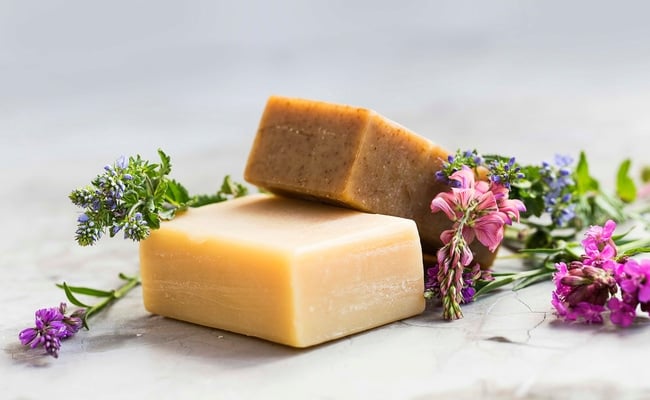
Centuries ago, the human race stink, stank, and stunk. The road to personal hygiene was a long one, but thank goodness we’ve arrived! Read on to learn how to make soap—as well as its bizarre history! It’s truly scent-sational.
Today, soap is a $22 billion industry worldwide and 13 billion bars are sold in the U.S. annually. Most of that is mass-marketed, however, there’s a burgeoning market for handmade soap for sale at farmer’s and craft markets across the country. Recent reports reveal 300,000 soap-making businesses in the US, with artisan and homemade soap-market bringing in $150 million per year.
From elementary school on we’re taught about the Boston Tea Party—an important spark leading to American independence from the British. But revolutionaries could have brought their tax dissent to a sudsy conclusion.
A huge tax on soap from across the pond tripling the cost of the product might well have been as offensive to colonists as extravagant fees placed on their warm beverage of choice. For nearly 150 years, England imposed a healthy tax on soap to help fund its wars abroad, including those in the New World.
But that’s only one fascinating chapter in the story of soap. The story of this small, yet important part of our everyday life, is one filled with accidental innovation, great periods of product refinement, and a history of artisan and DIY production of bars.
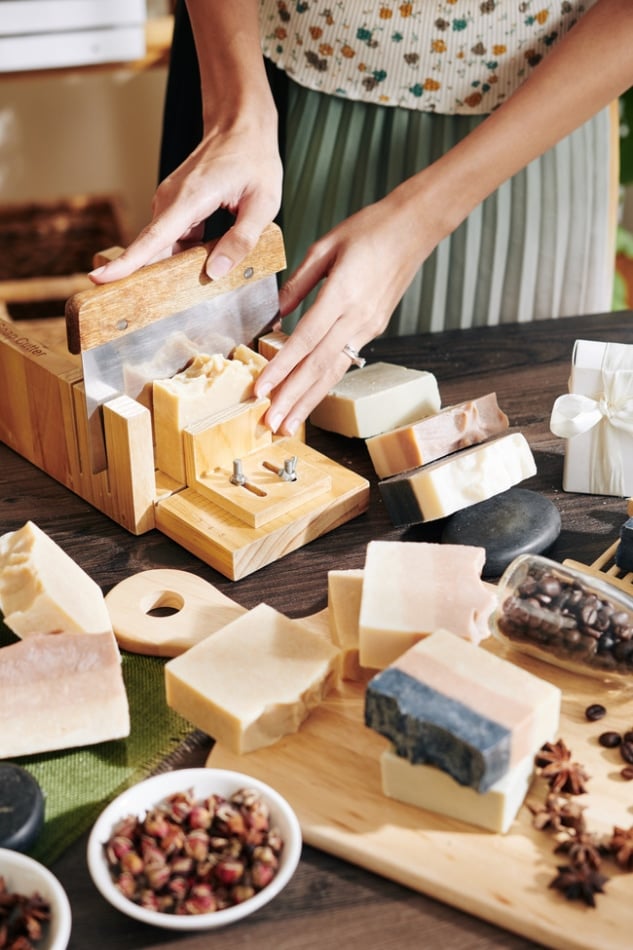
A Dirty Past
Years ago people had no conception of personal cleanliness. For a good stretch of human history, medical leaders thought it was unhealthy to clean the body with soap products.
The earliest evidence of soap goes back to the ancient Babylonians in 2800 BC. Archeologists discovered cylinders inscribed to say “fats boiled with ashes.” It was assumed this was the basis for the product. In ancient Egypt, a medical document called the Ebers Papyrus described a recipe including animal and vegetable fats and alkaline salts used for washing.
According to legend, it was common in ancient Rome for animals to be sacrificed on Mount Sapo (the Latin word for soap). Rainwater would mix with animal fats and ashes (providing the alkali) around the ceremonial alters and run down to a river where women washed clothes. They found this mixture helped clean textiles, and the concept was born for both clothes and personal care. The tale of Mount Sapo is often told but has never been proven.
Any questions? Contact [email protected]
These early soaps—perhaps common to the communal baths used by the Greeks and Romans—were likely brown or gray and soft and had no fragrances. But at the time they were likely a big improvement over the common washing practices of the day. Those early bathers were accustomed to rubbing their bodies with clay or pumice and scraping the mixture off with a stigell, a curved, trowel-like instrument.
Then the use of cleansing soaps waxed and waned for a time. Making it was considered an art in Italy, Spain, and France, when a purer, softer, and milder form of castile soap was formulated. In the Islamic Middle East more sophisticated ones were made using olive oil and exported to Europe. These small-batches were reserved for the wealthy. Less well-to-do families passed their own soap-making recipes down through the generations.
In the Middle Ages, medical experts began to think bathing helped spread illness. This frightened France’s King Louis the 14th, who is said to have taken only three baths over a lifetime, apparently covering his body odor with perfumes.
Thankfully, medical opinion changed, and by 1800, French chemist Nicholas LaBlanc figured out how to use common salt in the manufacturing process. This paved the way for soap to become one of the first mass-marketed products.
Soap to the Rescue
The understanding of soap’s benefits to fight infection and promote healing grew through several events of the 19th and 20th Centuries. During the Crimean War in the 1850s, Florence Nightingale, credited with the evolution of modern nursing, stressed the importance of washing hands with soap to prevent the spread of cholera. The U.S. Civil War launched the business of William Proctor and James Gamble, who built fortunes on their soap products.
An American folklore was built around the image of rural families mixing animal fat and lye created from ashes to produce their own soaps. That self-reliance no doubt was an influence on the emergence of soap-making hobbyists and thriving boutique businesses putting their own spin on the practice. Go to any farmer’s market or specialty shop (and on FarmersAlmanac.com) and you’ll find a dizzying variety of fragrances, colors ,and textures to the soap.
And that leads us back to the Brits and the American Revolution. After having imposed a crippling tax on soap since the early 1700s, England lost its hold over the soap industry by the 1850s due to factory production of cleaning products. By their actions, the colonists proved they could better afford to hoist a shipment of tea into the harbor than to give up their baths.
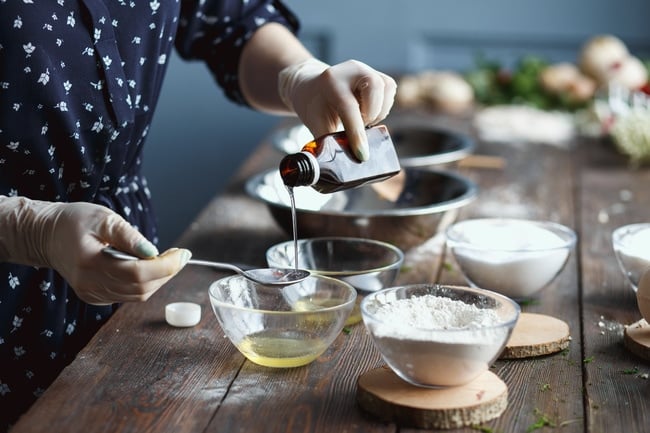
How To Make Soap
Popular with artisan soap makers and DIY hobbyists, the old-fashioned cold process utilizes several types of vegetable oils and a lye-water mixture. The basic recipe can be mixed with an infinite variety of fragrances and colors to personalize your soap.
Self-proclaimed Soap Queen Anne-Marie Faiola, founder of crafting company BrambleBerry.com in Bellingham, Washington, shares the basic step-by-step process in the following video:
Faiola constantly stresses the importance of safety when working with sodium hydroxide lye, which is a corrosive substance. She says to wear protective eyewear, rubber or plastic gloves and long-sleeve shirts and pants to protect from splashing. And work only in a well-ventilated room as the lye mixture produces dangerous fumes.
Ingredients:
- 7.9 ounces of distilled water
- 3.4 ounces of sodium hydroxide (lye)
- 8 ounces coconut oil
- 8 ounces palm oil
- 8 ounces olive oil
Tools:
- Heat-safe nonreactive containers and utensils
- Immersion stick blender
Directions:
- Measure the distilled water and lye in two containers.
- Add lye slowly to the water (which creates heat). Carefully set aside to cool.
- Heat the oils as necessary to get them in liquid form and within 10 degrees of each other.
- Slowly pour lye water into the mixed oils.
- Use the stick blender to mix the ingredients (avoid introducing air bubbles) until the mixture shows faint trailings (called trace) and add any fragrances or colors when the mixture is the consistency of light pudding.
- Pour the liquid into a mold.
- In 1-3 days, remove the soap from the mold, slice into bars, and cure them in a cool, dry place for 4-6 weeks before using.
Keep Learning
See more soap-making tutorials on YouTube here.
Join The Discussion!
Did you find this article interesting?
What surprised you the most about the history of soap?
Have you ever made soap before?
What are some of your favorite scents (or essential oils) in soaps?

Jim Kneiszel
Jim Kneiszel is a freelance writer based in De Pere, Wisconsin. He edits a number of trade publications and runs The Word House with his wife, Judy. His article, Infuriating and Frightening Invasive Species appears in the 2021 Farmers' Almanac.



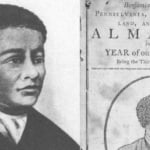

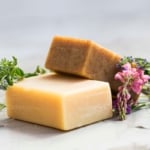
I will continue to buy my soap!
There is are plants that work like soap; they were and still are used for cleaning. My guess is that they are the forerunner of the happy accident of wood ash and fat becoming soap. The two plant cleansers that I am most familiar with are Bouncing Bet, known as soapwort. You can find the plant on the side of the road and in the woods. Just bruise the leaves and add water, it becomes soap-like and works well for cleansing. The other plant cleanser is called Soap Nuts, which are the dried husk of the soapberry nut. Soapnuts work very well for laundry and personal cleansing. I buy soapnuts at my local co-op and use them for laundry, they work very well. The “nuts” are put in a drawstring “teabag” for use and are replaced when they become soft.
Enjoy reading articles and this one especially. I have a slice of lye soap from the 1930s.
I HAVE VERY OILY SKIN AND USUALLY TAKE AT LEAST 2 showers a day! my grandmothers used castille soap..my parents were raised on dial..ivory..lifebuoy..i use deodorant soap like irish spring or coast…i love the ambiance of the middle ages..but never want to live in it…i remember my mom giving me a bath at the age of 3..and pointing to the clock on the dial soap..kept asking her “what time is it?”
Fascinating. Didn’t realize so much oil was in soap
Hi Adonis! Glad to hear you enjoyed the article and learned something new. ?